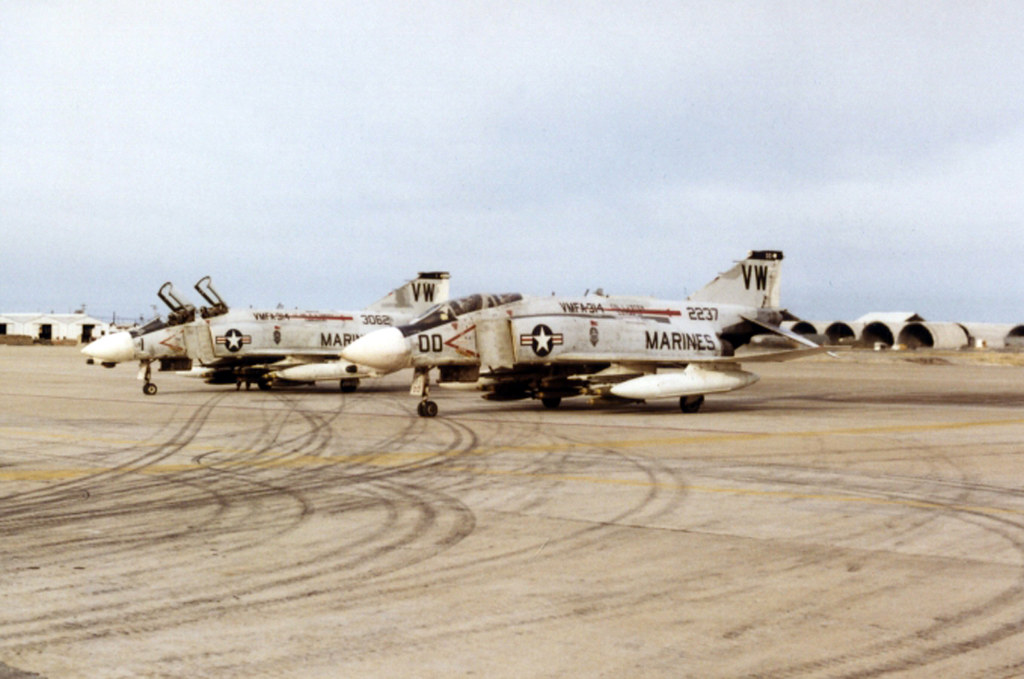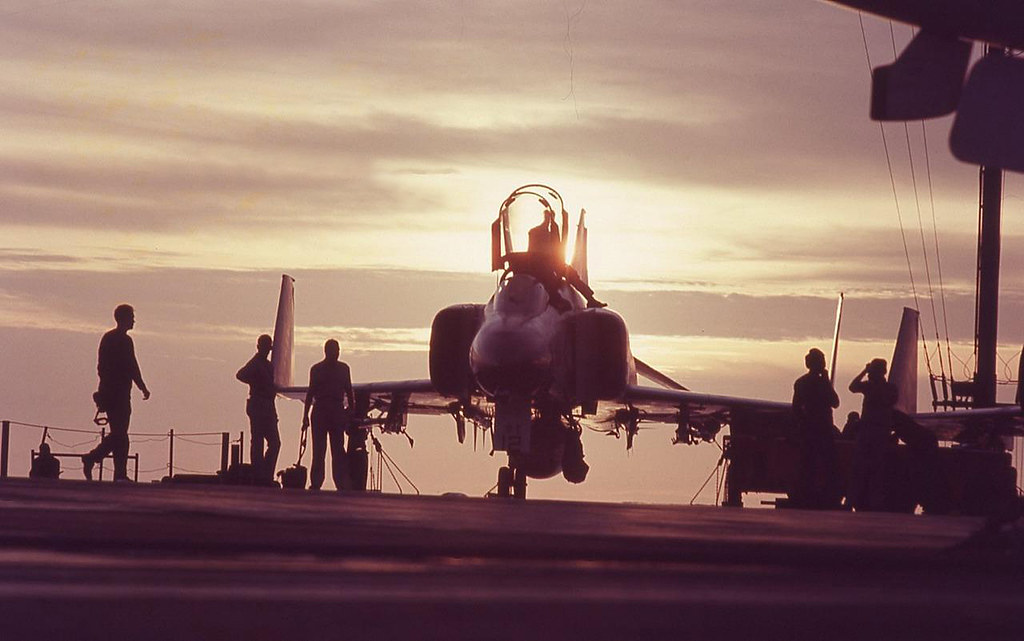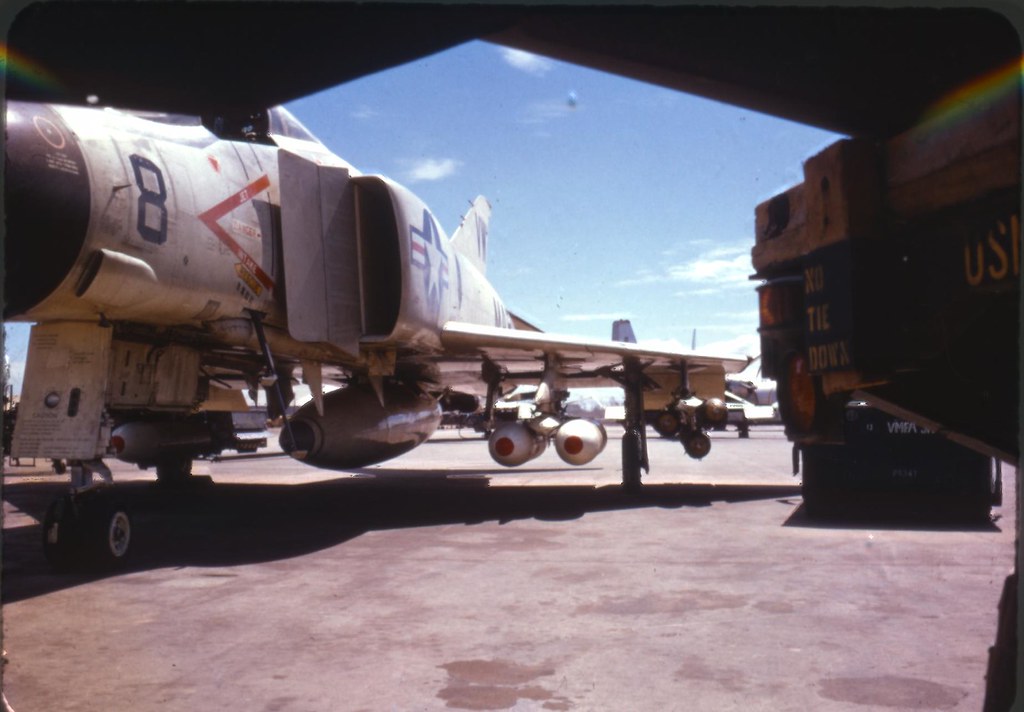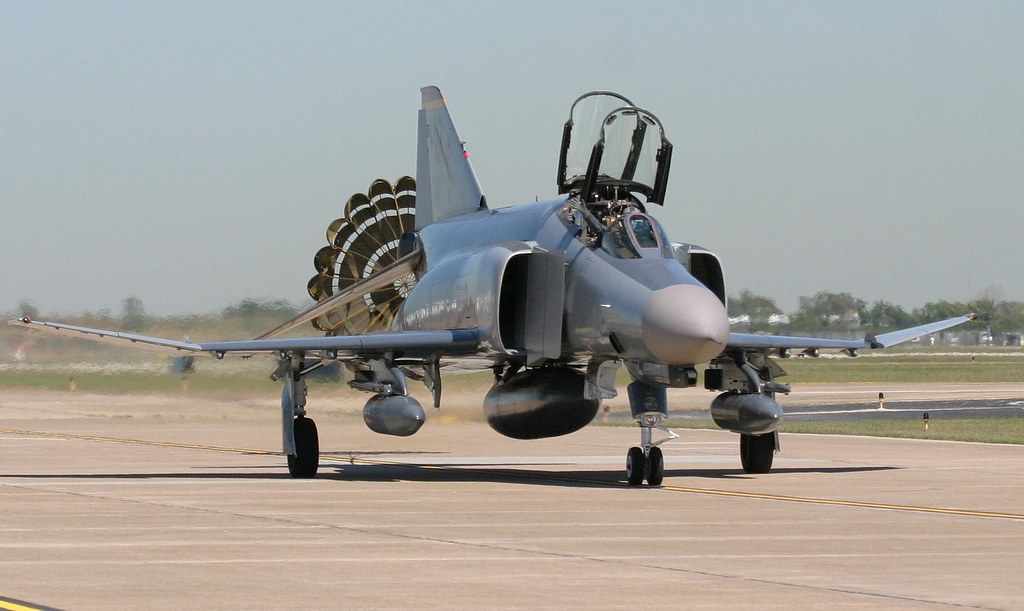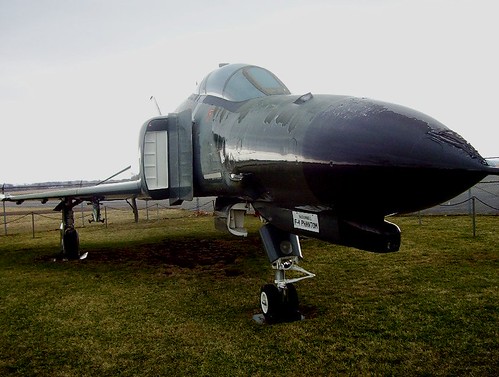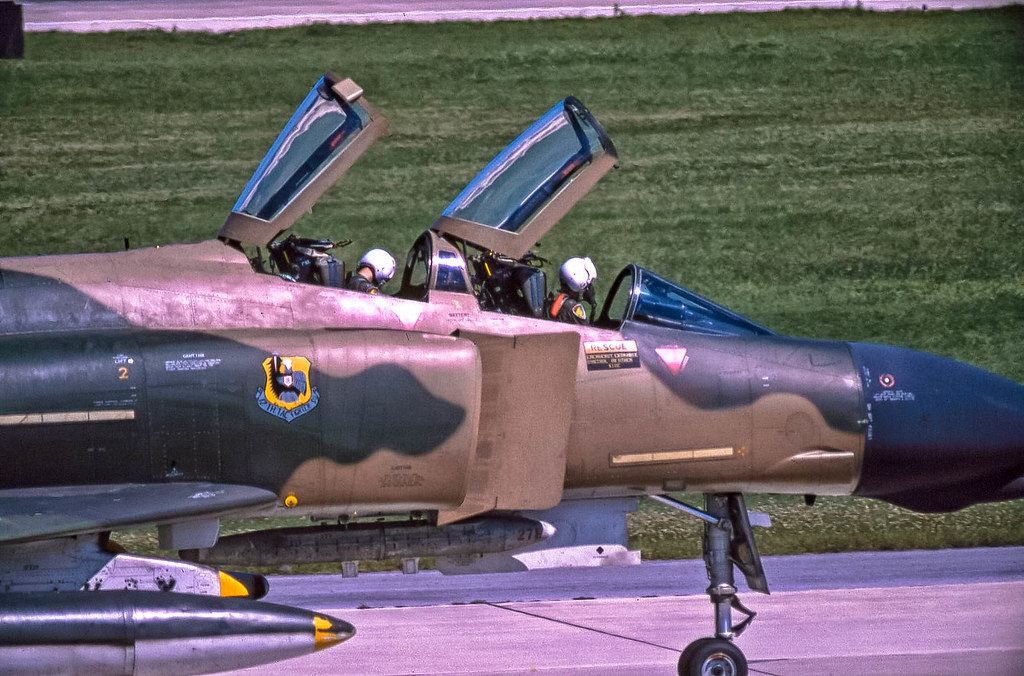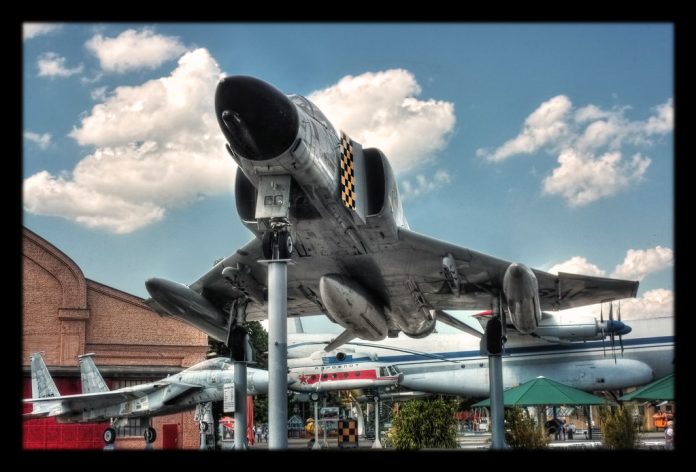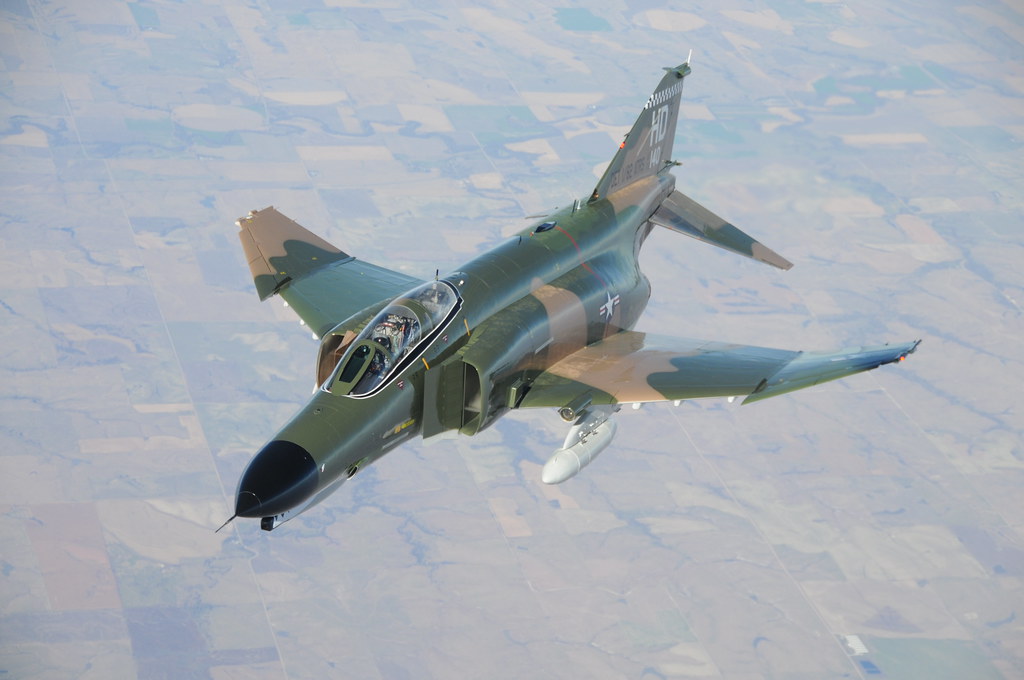
Upon its maiden flight in 1958, the Phantom’s capabilities rapidly became apparent. It shattered speed and altitude records with the same ease that its twin J79 engines broke the sound barrier. Its powerful twin J79 engines helped the F-4 achieve a top service speed of Mach 2.23 (1,473 mph) at 40,000 feet in level flight setting a world speed record at 1,606 mph in 1961.
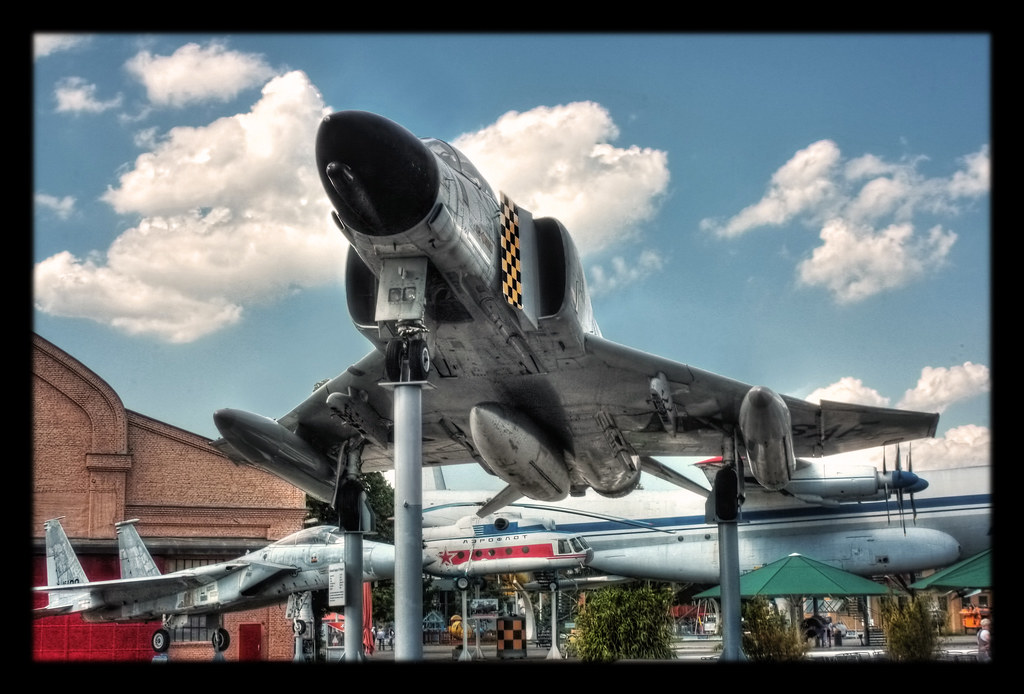
The triumph of the F-4 Phantom was further cemented by Secretary of Defense Robert McNamara’s pursuit of a “universal fighter.” His vision—to have a single aircraft serve the Navy, Air Force, and Marines—was realized with minimal alterations to the Phantom design.
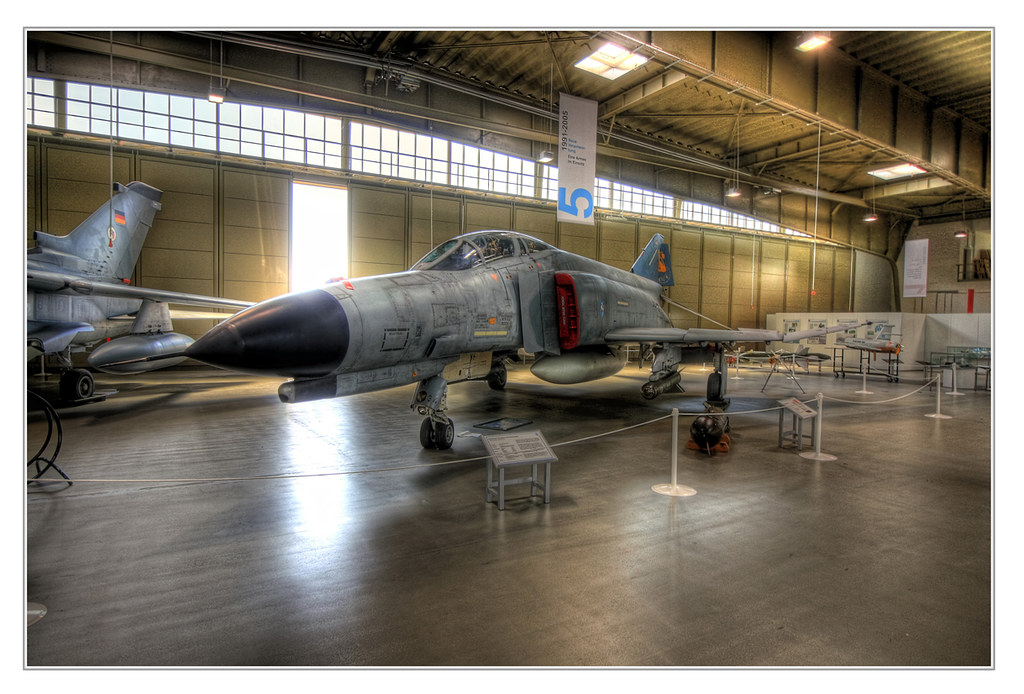
During the Vietnam War, the Phantom showed its mettle, downing more enemy aircraft than any other fighter. Its arsenal was comprehensive, with the capability to unleash AIM-4 Falcon, AIM-7 Sparrow, and AIM-9 Sidewinder missiles, along with a payload that included conventional bombs and even nuclear weapons. The F-4 had powerful, advanced Electronic Warfare tools for its time, like the “look down/shoot down” capability and the APX-80 “Combat Tree” targeting system.

The Phantom saw extensive combat, from the skies of Vietnam to the deserts of Operation Desert Storm. Remarkably, some Phantoms remain in service to this day in allied countries. Unit flyaway cost was around $2.4 million for the F-4E variant in 1965 dollars.
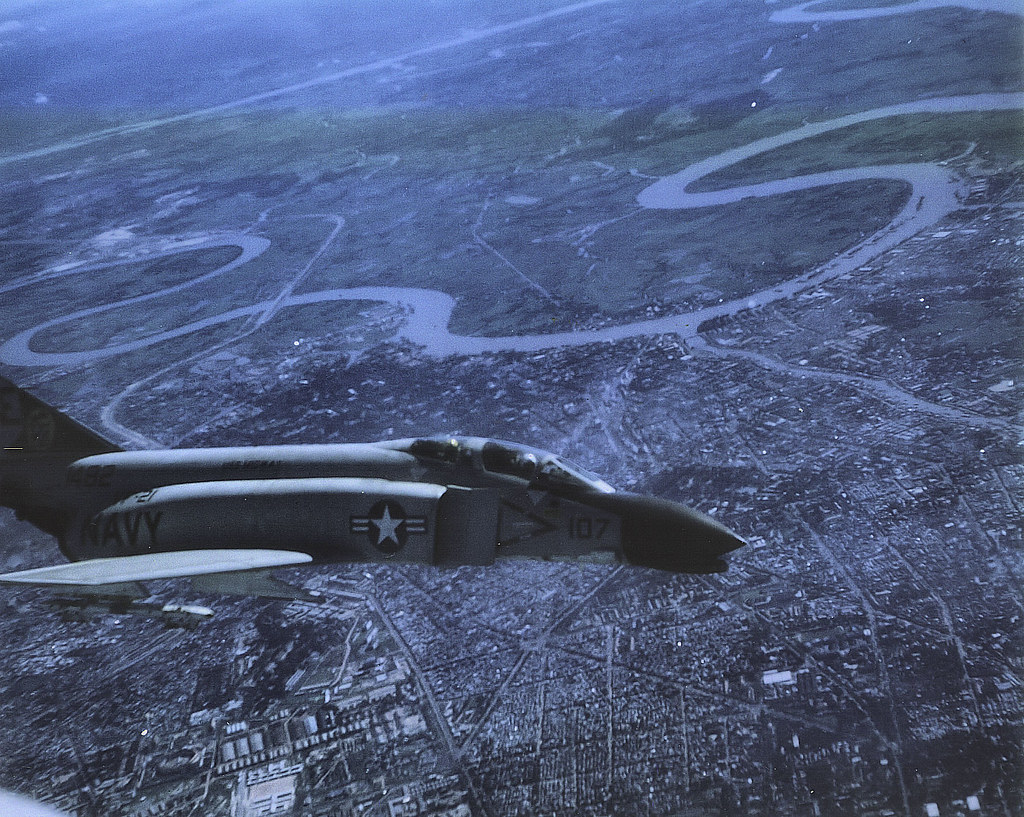
Despite initial teething problems, like leaks in wing-mounted fuel tanks, aileron control issues, and engine compartment fires. Despite these flaws, the F-4 proved capable and reliable in combat and became a favorite of many pilots and RIOs. Former Phantom pilot John Cheshire said, “It was an easy fighter to fly. However, because of its wide turning radius, it took some extra instruction on how to defeat tight-turning enemy aircraft. That added instruction worked.”Of all the many aircraft and fighters I have flown, the F-4 Phantom will always be my favorite.”
related images you might be interested.


